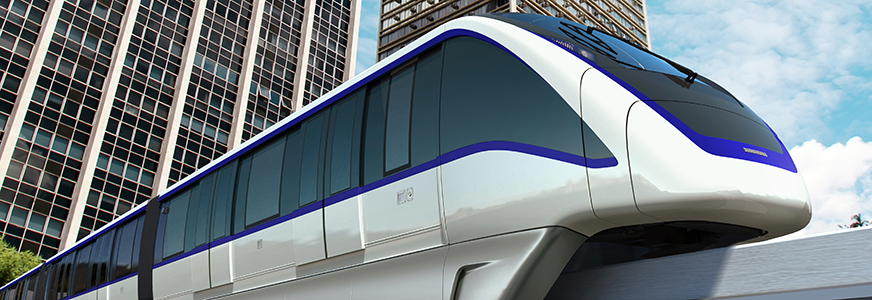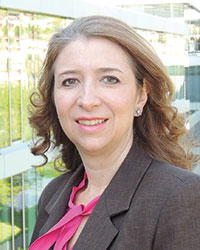A Call to Order
Aliaxis transformed LatAm treasury in 15 months, winning TMI’s 2025 LATAM Best in Class award.
Published: May 31, 2018


Bombardier Transportation Group has a proactive strategy of investing in leading mobility solutions, capturing global growth opportunities and flawless execution. Vital to achieving this strategy is attracting and retaining key talent globally, demonstrating strong financial discipline, pursuing an active risk management strategy and committing to corporate social responsibility. As the group’s treasury team, we play a critical role in fulfilling these ambitions, but we need the right skills, technology, policies and processes to do so effectively. A flagship treasury project to facilitate our corporate and treasury strategy has been the implementation of a new treasury management system (TMS), FIS’s Quantum 6, which went live in 2016.
Our Transportation Group treasury function is based in Zurich, Switzerland, and comprises a team of 13 treasury professionals with a wide range of responsibilities. These include:
We work with more than 30 currencies in over 400 accounts spread across 35 different banks, each with high transaction volumes that include more than 500 FX transactions monthly.
We had used our previous TMS – FIS’s Globe$ solution, for almost two decades. In that time, our business requirements evolved beyond what Globe$ could accommodate. We had created a patchwork of workarounds and add-ons to meet our treasury needs, and as a result, we reached a point where our treasury technology architecture was far too complex, fragmented, and expensive for IT to support. We were also conscious that we were reliant on a very few key people, which presented a significant risk to our business. Given the scale of our group ambitions, and our treasury commitment to remaining best-in-class, we needed a system that would support secure, automated processes on one hand, and facilitate high-quality decision-making on the other.
We developed a robust business case in 2013, having conducted an initial review of available systems and talked to other companies that had a similar profile to our own. This was triggered in part by the demands of IFRS 9, as we were concerned that we would not be able to support the new standard using our existing TMS. We had already had to develop EMIR reporting, which had proved costly and difficult, and we recognised that IFRS 9 was likely to prove even more challenging. The cost-benefit analysis was also compelling: the cost of a new system, including hosting, would be equivalent to the amount we were already spending on maintaining our old system, but the functionality, resilience and scalability would be far superior.
With an approved business case, we then issued a request for proposals in mid-2014 and conducted a rigorous selection process across a variety of leading TMS vendors, involving different parts of our business. A major decision was whether to implement the treasury modules of our ERP or a specialist TMS. As our ERP environment remains somewhat fragmented, we decided to implement a dedicated TMS that we could then integrate into different parts of the business.
While every organisation has its own priorities, it was important for Bombardier that a new system would support our hedge accounting requirements, and facilitate efficient, secure and highly-automated treasury operations. It was also important that the system would continue to meet our needs, so the vendor needed to demonstrate the ability and commitment to maintaining the system over the long term to support changing technology, market and regulatory practices, as well as the evolution of our own business.
Based on a comprehensive evaluation, we opted for FIS’s Quantum 6 solution. The solution, and the vendor, met our requirements more closely than the other systems included in the RfP process. FIS’s ability to host the solution in a secure, private cloud-based environment was important for us as we did not want to find ourselves in the same position as we had been previously - with a high degree of dependency on a few individuals. A hosted solution would also allow us to limit the amount of IT resources dedicated to the project and the ongoing maintenance of the system. We completed contract negotiations in December 2014 and started the implementation in the new year.
We completed the implementation in just over a year, which was a significant achievement for a project of this complexity, breadth and scale. Scoping the project was the most challenging, but also the most important element of the project: while every new implementation includes a balance between scoping upfront and learning as you go, we probably did a little too much of the latter. It was important to dedicate sufficient resources to the project, not only in terms of time, but also with clear expectations around roles and responsibilities. In addition to the core project tasks, we needed to include time for steering committee meetings, project documentation and project management, which are essential for project discipline and transparency. A project of this scale can be daunting, so we broke it down into milestones that were more manageable and that enabled us to engage with the right people and the right time.
User training was a priority for Bombardier as we have 375 users across different locations, but as Quantum 6 is completely web-based, with a single system globally, we were able to roll out a global training schedule very successfully. More difficult was change management, as despite the flexibility of the new system, we were moving from a solution that had been customised heavily to our specific needs to a solution used by a wide spectrum of organisations around the world, so we needed to adapt our processes in some cases. However, this proved a very worthwhile effort as we now have best-in-class processes that still reflect the specific needs of our business.
With over 69,500 employees across four business segments, Bombardier is a global leader in the transportation industry, creating innovative and game-changing planes and trains. Our products and services provide world-class transportation experiences that set new standards in passenger comfort, energy efficiency, reliability and safety.
Headquartered in Montreal, Canada, Bombardier has production and engineering sites in 28 countries across the segments of Transportation, Business Aircraft, Commercial Aircraft and Aerostructures and Engineering Services. Bombardier shares are traded on the Toronto Stock Exchange (BBD). In the fiscal year ended December 31, 2017, the company posted revenues of US$16.2bn.
Bombardier Transportation is a global leader in the rail industry with presence in 27 countries through 60 production and engineering sites, and 39,850 employees. The group covers the full spectrum of rail solutions, ranging from complete trains to sub-systems, maintenance services, system integration and signalling. The installed base of rolling stock exceeds 100,000 rail cars and locomotives worldwide.
We successfully completed the implementation of Quantum 6 in the summer of 2016, which was a particular achievement as we were an early adopter of a new system version and implementing a complex automated hedge accounting workflow. As the solution is hosted, we no longer have to worry about over-dependence on individuals within our business, and we are able to focus not on the system itself, but how we use it to manage the changing demands of treasury. We have achieved a quite significant level of automation, partly as a result of highly efficient processes and controls, but also by focusing on improving the accuracy and consistency of data on which these processes are based. This has also led to a variety of operational cost savings.
Our expectation, to some extent based around our previous experiences, was that a TMS would be boring and complicated, but this has not been the case at all. Users enjoy interacting with the system as it is very user-friendly, which has been invaluable in overcoming resistance to change and ensuring that people are committed to getting the best from the system.
However, during the project itself, it is important to recognise from the outset that every implementation, irrespective of the system, and whether it is hosted and/ or cloud-based, is an IT project. It can therefore be a steep learning curve for the project team who come from a treasury background. We were very fortunate in that the team was highly motivated and became adept at recognising which issues they should increase focus on, and which were less important.
Quantum 6 has a wide range of advanced capabilities which we will continue to explore over time, while also keeping up-to-date with new developments through user groups and regular dialogue with FIS. In addition, we are building our expertise in creating new report templates, which will allow us to be very precise in matching the expectations of stakeholders and managing changing business demands.
IFRS 9 compliance was one of the major reasons for deciding to work with FIS and Quantum 6, and now we are in an excellent position for the new standard enacted on 1 January 2018. We will also look to enhance some of our existing processes, such as intercompany loans and deposits, and the way that we manage commodities. While some companies opt to buy a specific commodities system, or manage them manually, we have been able to acquire a solution that meets our broad range of requirements across asset classes, and position our treasury to manage change and embrace innovation in the future.
Susana Aristizabal, M.B.A., C.T.P.
Director, Assistant Treasurer, Bombardier Transportation Financial Services
Susana Aristizabal joined Bombardier in July 2005 as a member of the Corporate Treasury department. She moved to Zurich in October 2008 to head the Cash Management team, responsible for the Transportation bank account structure and governance of the payment traffic. Her role was expanded in 2011 to include FX risk management and hedge accounting. Since 2012, she has been the Assistant Treasurer overseeing treasury operations, FX risk management, cash management and treasury controlling for the Transportation Group worldwide.
She has worked as a management consultant for the banking industry in her home country of Colombia and has years of experience as Lecturer in Treasury Management and Applied Corporate Finance at McGill University.
Susana holds a graduate diploma in International Business from McGill and an MBA from HEC Montreal, and is a Certified Treasury Professional (C.T.P.).
Christine Jensen joined Bombardier Transportation in June 2012 as a member of the treasury team in Zurich working primarily with hedge accounting and financial risk management. In 2016 her role was expanded to become Project Manager of the TMS implementation. Before joining Bombardier, she held various corporate treasury roles in the US, Denmark and Switzerland.
Christine is originally from the US and is currently based in Zurich, Switzerland. She holds a Bachelor’s degree in Business Administration from the University of Michigan Ross School of Business and an M.B.A. from the University of St Gallen in Switzerland and is a Certified Treasury Professional (C.T.P.).
Christine has now taken a position as Treasury Manager, EMEA at Johnson Controls.